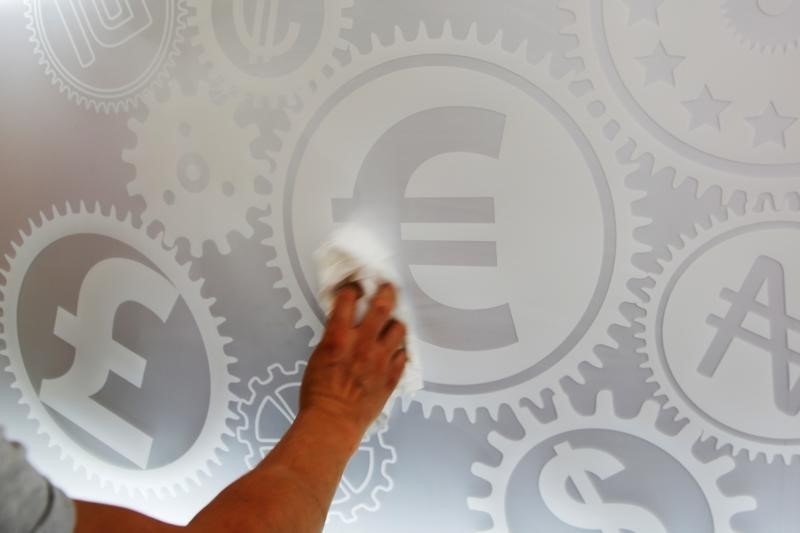* Graphic: World FX rates in 2019 http://tmsnrt.rs/2egbfVh
By Saikat Chatterjee
LONDON, July 5 (Reuters) - The euro fell a fifth of a
percent against the dollar on Friday and is set for its biggest
weekly drop in three weeks as a relentless slide in government
bond yields forced investors to look for higher-yielding assets
elsewhere.
Falling yields globally has also raised concerns that
policymakers, especially the European Central Bank, may have
limited firepower in boosting economic growth, a factor that has
weighed on the single currency.
"We have seen little evidence that unconventional tools can
stimulate or sustain economic growth," said David Lafferty,
chief market strategist at Natixis Investment Managers.
"The global recovery and expansion has been historically
long but has also been historically weak."
Germany's 10-year Bund yield DE10YT=RR breached the
European Central Bank's deposit rate of -0.40%, a level analysts
say acts as a psychological barrier even though shorter-dated
German bond yields already trade well below it. GVD/EUR
But despite the fall in yields -- German bond yields have
dropped 65 bps this year -- the single currency has been well
supported at around $1.12, a level it has traded above since
early June and 1.5% above a 2019 low of $1.1055 hit in late May.
Analysts say the euro's surprising strength is due to
concerns that any stimulus from the ECB after years of negative
policy rates and multiple rounds of bond purchases may be
dwarfed by likely big rate cuts from the Fed.
"More easing from the next ECB chief is already priced into
bond markets and it will take a significant surprise for the
euro to move from current levels," said Ricardo Evangelista, a
senior analyst at brokerage ActivTrades.
On Friday, the single currency EUR=EBS edged 0.2% lower at
$1.1265 and is on track for a weekly loss of 0.9% versus the
dollar, its biggest weekly loss since mid-June.
RATE CUTS
Expectations of big U.S. rate cuts will not be shaken by
jobs data due later, with economists polled by Reuters
predicting U.S. non-farm payrolls to have increased by 160,000
in June from 75,000 in May.
Though markets are expecting as much as three rate cuts by
the end of 2019, interest rate differentials between benchmark
10-year debt in the United States and Germany stands at a chunky
235 basis points.
The dollar index .DXY against a basket of six major
currencies stood little changed at 96.823, having spent the
previous day in a tight range as U.S. financial markets were
closed for the Independence Day holiday.
The Australian dollar AUD=D4 was a shade weaker at $0.7016
after climbing to a two-month high of $0.7048 the previous day.
The Aussie has advanced 1.4% this week with expected rate
cuts from the Fed and the ECB helping shift some of the focus
away from the Reserve Bank of Australia's own easing bias.
The pound struggled near a two-week low of $1.2557 GBP=D4
plumbed on Wednesday.
<^^^^^^^^^^^^^^^^^^^^^^^^^^^^^^^^^^^^^^^^^^^^^^^^^^^^^^^^^^^
Italy Germany spread and euro https://tmsnrt.rs/2FQQ5Zm
^^^^^^^^^^^^^^^^^^^^^^^^^^^^^^^^^^^^^^^^^^^^^^^^^^^^^^^^^^^>
